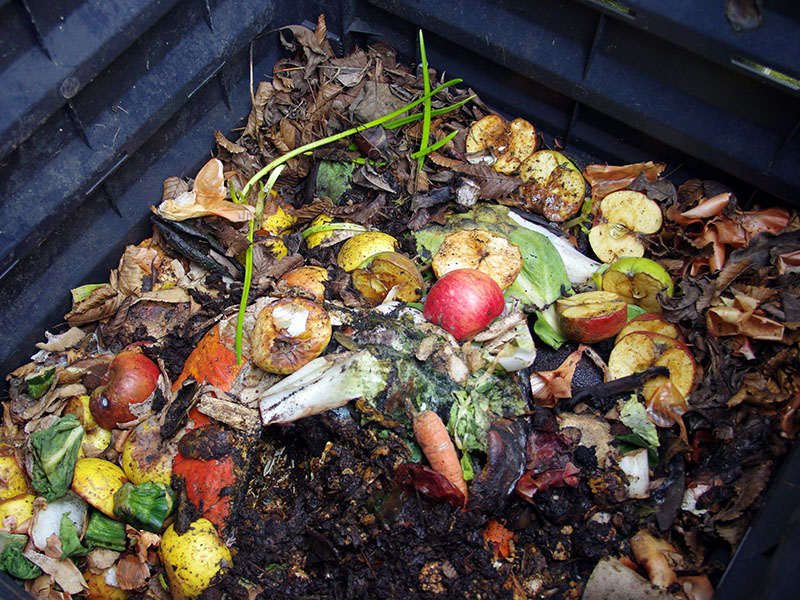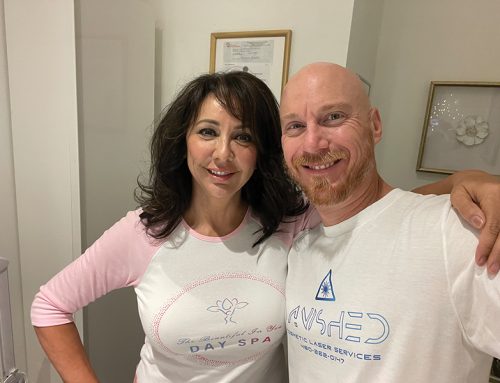What is compost?
Compost is organic material that has decomposed. It is made by combining “green” items like food scraps and grass cuttings with “brown” items like leaves and wood chips, which then break down over time. The resulting material is nutrient-rich and can be used in gardens as a soil conditioner and natural pesticide.
Why compost?
Organic matter like food, food-soiled paper, and yard waste is more than a third of what gets thrown into the garbage. When sent to the landfill, it creates methane, a greenhouse gas that is 25 times more powerful than carbon dioxide. Backyard composting or with a local program protects our environment, saves landfill space, creates jobs, and enriches soil. And it’s easier than you might think!
Participate in a local composting program or DIY
The City of Phoenix runs a municipal composting facility that processes yard waste. You can sign up for a curbside green bin that accepts grass clippings, branches, and shrubs.
If you want to compost food and food-soiled paper, Recycled City is the area’s local community composter. For only $10/month, they accept a variety of compostable waste, such as food, meat, dairy, napkins, and paper plates, and even pet food and hair trimmings.
Types of home composters
With a small investment you can turn your compostable scraps into nutrient-rich soil at home. There are several different home composters:
• Manufactured compost bins, typically made out of plastic
• Compost tumblers that can be easily turned
• Wooden and pallet bins with compartments
• Worm composting (vermicomposting)
What to put in the compost
To get started follow these steps:
Step 1: Collect your “brown” and “green” compostable material
a. “Browns” – dry materials like wood chips, dried leaves, grass, and plants. It works even better when you rip or cut items into smaller pieces.
b. “Greens” – fresh, moist materials like grass cuttings and food scraps.
Step 2: Put an approximately equal amount of browns and greens into your composter. To ensure that your pile does not smell, add more browns (1 part green, 2 parts brown).
Step 3: Soak the pile with water, but don’t over soak. It should be as damp as a wrung-out sponge.
Step 4: Wait a week, then add water, turn, and stir the pile.
Step 5: Keep adding, soaking, and stirring! Your compost should be ready in 3-6 months.
Many home composting systems are not well-suited for dairy, fish, meats, fats, or oil/grease, as these products take longer to break down and can attract pests.
How to collect compostables in your kitchen
Collecting food and food-soiled paper in your kitchen doesn’t have to be a hassle. There are many types of countertop containers, which you can line with a certified compostable bag, or rinse to keep clean. As you clean up, you can scrape leftovers directly into the bin. Once the container is full, dump it into your outdoor collection bin or composting system. During the warmer months, you can keep your food scraps in the fridge, where they won’t smell or attract fruit flies.
Fixing issues like odors or pests
Home composting is easy, but there a few common issues that first-time composters run into:
• Funny smells? Turn the pile and add some browns
• Pile too dry? Spray some water, add in greens, and mix
• Fruit flies? Stir and add leaves or grass
• Insects, raccoons, rats? There might be some meat or fatty food scraps in your bin. First, remove the meat or fats. You can also cover the pile with a heavy layer of soil, leaves or sawdust, or use an animal-proof composter.
What about takeout containers and compostable products?
If you eat out, you may bring home packaging labeled “compostable.” Containers, cups, and utensils like those made by World Centric are certified compostable by BPI, a third-party certification. This means a product has been tested to revert to carbon dioxide, water, inorganic compounds, and biomass at a rate similar to paper.
Compostable products can be made from renewable plant fibers, wood paper, or compostable plastics. Products made from plant fibers or paper are not certified to break down at home, but you can experiment to see how they perform in your system. It helps to cut or rip them into smaller pieces. Compostable plastics should not be put into your home composting system, since they require higher heat to break down. Once you have an outdoor composter and a kitchen container for collecting material, you’ll be well on your way to turning waste into black gold.




